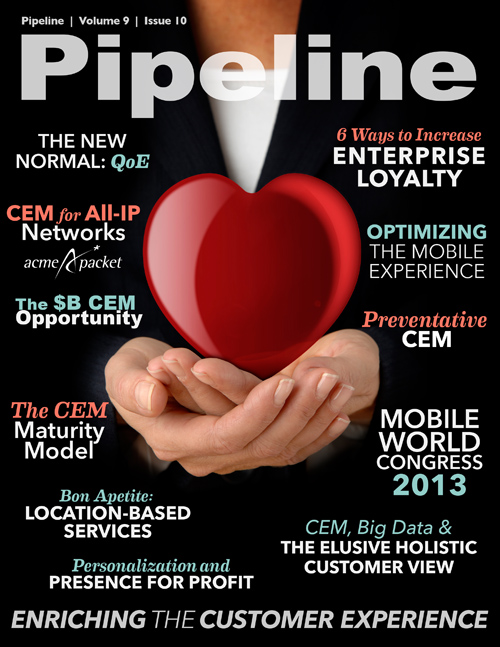The New Normal: QoE
The four dimensions of QoE
A service provider needs a dimensional view of a customer that includes services and history, the value of the customer and the components that comprise his or her experience, including device, data-plan and network information. In addition, a provider must be able to proactively address customer issues by integrating with its support systems and network environments.
“In order to make CRM a tool with which operators can positively differentiate, it needs to be performed within the context of the customer’s end-to-end experience. To do this you need to get data from the network, OSS and BSS,” said Peter Heuman, vice president and head of solution area BSS, at Ericsson. “Historically, providers have struggled to integrate their billing and CRM systems, but the reality is they need much more.”
Ericsson is in a good position to know. Over 40 percent of all mobile traffic goes through its networks, which serve more than two billion subscribers in 180 countries. In February of last year the company announced the launch of its Telecom CRM product, which is built upon Microsoft Dynamics CRM, is preintegrated with billing and provides standards-based APIs (application programming interfaces) for seamless extensibility into OSS and network management systems. Telecom CRM is a good example of the intersection of ease of use and ease of integration which includes strong, telecom-specific functionality at the same time.
“Service providers can no longer endure time-consuming implementation cycles and the high running costs of legacy implementations,” Heuman added. “CIOs are looking to quickly deploy agile solutions that can help them consolidate systems while improving the customer experience through shorter and more effective experience-driven interactions with customer service.”
Although CEM is still at the forefront of service providers’ minds, the actual implementation of it involves a complete, 360-degree view of the customer and their experience. The new approach of QoE implies an understanding of the multiple facets that make up the customer experience from the customer’s perspective, then leveraging that perspective to reduce or eliminate negative touchpoints throughout the customer life cycle. It’s drastically different from historical approaches to CEM, which have relied almost exclusively on the provider’s perspective of the customer experience.
Resolution
QoE is about understanding customer issues as they relate to the experience the customer is actually having so that the interaction can be both positive and fruitful for the customer and service provider alike. Issues are bound to crop up from time to time, but providers have a unique opportunity to enrich the customer experience by resolving them quickly, in a manner that demonstrates they understand their customer’s unique needs and if they are able to offer constructive, personalized solutions. Often that involves new products or services that would make the customer’s experience more enjoyable as it relates to an individual customer’s particularly needs. But none of it would be possible without robust systems that provide a dimensional view of the customer and their experience.
Each time a customer has an issue, a service provider has an opportunity, whether it’s to proactively prevent the issue by using a systems that provides the proper visibility or by improving the experience by offering solutions that meet the customer’s needs and enhance their experience. But, thankfully, as the customer experience becomes the last differentiator standing, the days of waiting endlessly for a customer service representative to not solve a problem are coming to an end.


















